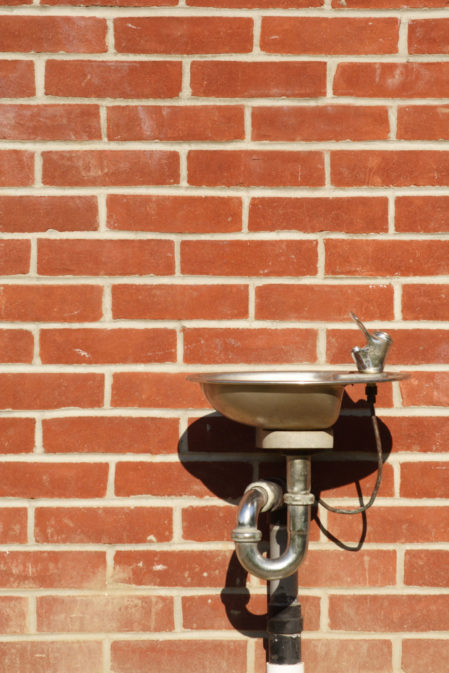By Alex Geli, Lancaster Online.
Many Lancaster County schools discovered troubling amounts of toxic lead flowing through their pipes this past school year after a new state law pushed them to test their water.
Among several hundred water sources tested at the county’s public schools, 42 had lead levels beyond the action limit of 15 parts per billion set by the U.S. Environmental Protection Agency, LNP found after requesting each school’s water testing results through the Right to Know Law.
The tests were conducted in the 2018-19 school year in accordance with a new Pennsylvania law that encourages schools to test their water for lead. The law allows schools to opt out of testing if they discuss the lead issue at a public meeting, though none of the 17 public school districts, nor the county’s lone charter school, did so.
School districts that discovered elevated lead levels were Cocalico, Conestoga Valley, Ephrata Area, Octorara Area, School District of Lancaster and Warwick. Tests showed levels as high as 469 parts per billion, or 39 times the federal action limit.
In each of those districts, fixes and retests have taken place to ensure students have safe drinking water, officials said.
While corrective action was widely taken, it’s not clear when schools would have tested next if state lawmakers hadn’t stepped in.

According to Dr. Jennifer Brubaker, chair of the Lancaster Lead Coalition and a pediatrician at the Lancaster Health Center, prolonged lead consumption can lead to developmental disabilities, problems with learning and memory, and organ damage. These effects, she said, typically aren’t immediately visible.
“A lot of times it’s a silent process,” she said.
In addition to urging schools to test, the law, which passed in an amended school code bill in June 2018, says schools must implement a remediation plan if lead levels exceed 15 parts per billion. It stops short of forcing schools to notify parents of elevated test results; however, most local schools did anyway.
Cocalico
Reamstown Elementary School, in Cocalico, had the highest lead reading in the county — 469 parts per billion. None of the district’s 12 water sources that were found to have elevated lead levels were accessible to students, Superintendent Ella Musser said.
“There was no way for anyone to use these water sources during this time,” she said.
Most of the areas of concern, she said, were “seldom-used.” The water was shut off from every source, and caution tape and “do not use” signs were placed at the faucets. The district then fixed or replaced most of the fittings, and flushed the others.
Parents were notified throughout the process, Musser said.
Conestoga Valley
Conestoga Valley in May found 12 violations, though the school said the amount of lead was elevated because the water had been sitting in the pipes for more than 18 hours.
“After flushing the pipes and following the recommended protocol of letting the water sit in the pipes for between 8-18 hours, the tests were repeated and all elementary schools passed with a rating below the maximum level,” district spokeswoman Kendal Gapinski told LNP.
School officials did not notify parents. That’s because none of the sinks in question were used by students for drinking, Gapinski said.
Simply flushing the pipes can be problematic, said Stephanie Wein, a clean water advocate for the state environmental group PennEnvironment.
“That is not using best practices and that is not painting an accurate picture,” she said, adding that tests should “capture a worst-case scenario.”
Ephrata Area
Testing in March showed 14 water sources, which included classroom water fountains and faucets, with elevated lead levels in Ephrata. School officials withdrew the outlets from service and replaced them over the summer, district spokeswoman Sarah McBee said.
School administrators sent emails notifying parents of the tests, and the changes made afterward.
Octorara Area, Warwick
Octorara and Warwick discovered one water source each with elevated lead.
Octorara’s was in an elementary school kitchen and not accessible by students, district business manager Jeff Curtis said. Caution tape was placed around the area. After replacing some hardware, a retest showed lead levels below the action level.
Warwick’s was a sink in an elementary school nurse’s office. It also wasn’t used by students, district spokeswoman Jackie Yanchocik said. The line was flushed, then retested. It passed.
School District of Lancaster
In Lancaster, a hand-washing sink in the faculty lounge of King Elementary School and about half of the classroom sinks at Price Elementary School showed elevated lead levels. At King, the sink fixtures were replaced and retested below the action level. At Price, the sinks were shut down, and students have been provided bottled water ever since.
Tests were conducted in January, and parents were notified of the results in February, district spokesman Adam Aurand said.
The district did not test at Reynolds Middle School because of construction; however, water testing in 2016 showed no elevated lead levels.
Original article: https://lancasteronline.com/news/local/several-lancaster-county-school-districts-discovered-toxic-lead-in-their/article_3c4c13f0-df12-11e9-ab60-7b4a6a3ebf1b.html

